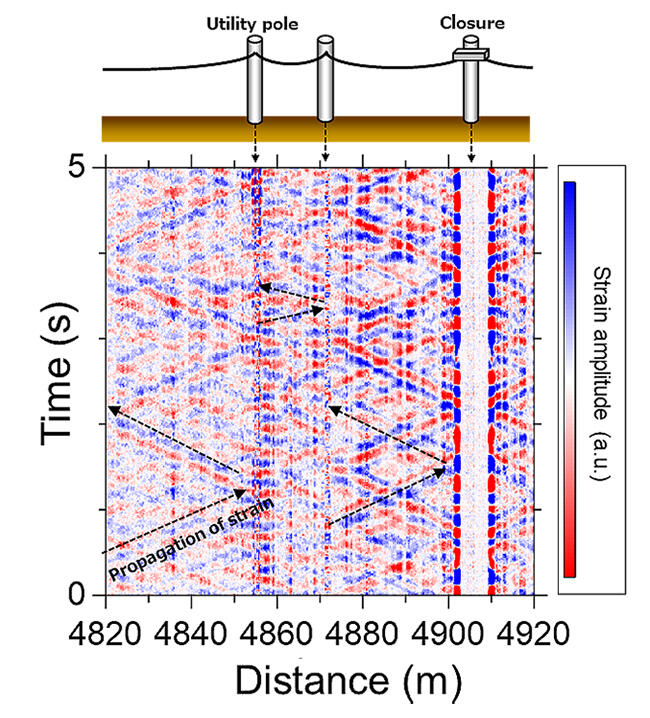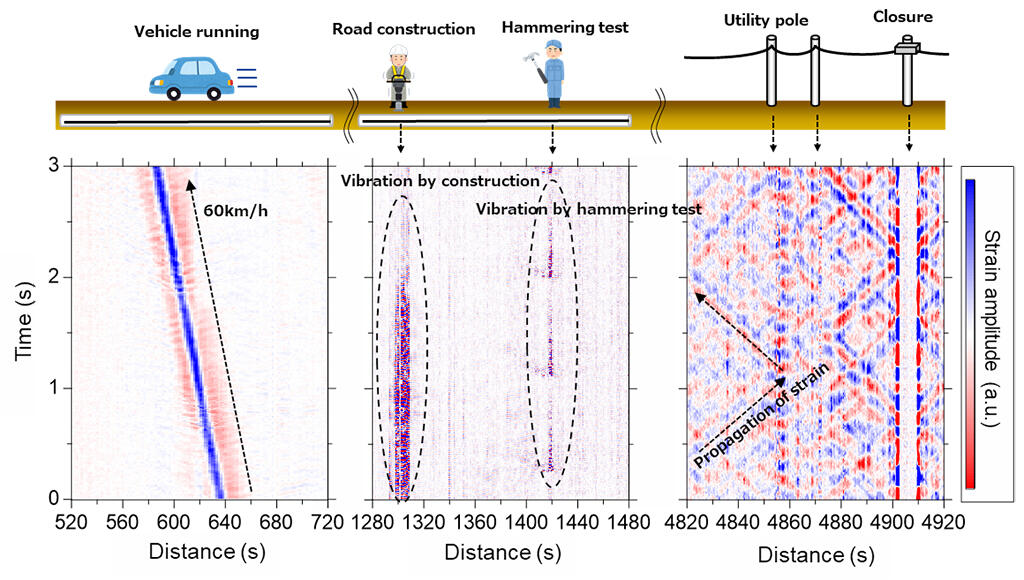On September 27, NTT announced and demonstrated a technology that uses existing optical communication fibers as a sensor to measure vibrations applied to an optical fiber with an extremely high accuracy. This technology is expected to be used for environmental monitoring to obtain environmental information around optical fiber cables. NTT is advancing the establishment of this technology, and in the Innovative Optical and Wireless Network (IOWN) era that the company is aiming for, environmental monitoring has been realized using the existing optical fiber cable network as a sensor. NTT also intended to support solutions for various social issues by utilizing the obtained environmental information in various industrial fields. The results will be published in the December issue of the IEEE Journal of Lightwave Technology.
Conventional optical fiber vibration measurement technology has a spatial resolution in the order of several meters. Accurately measuring vibrations with wavelengths shorter than this spatial resolution and changes in the vibration state has not been possible to date. The wavelength of the vibration propagating through the optical fiber cable and the section length where the vibrational state changes is approximately 1 m; this meant that capturing the vibration aspect accurately with conventional measurement techniques is difficult. Moreover, even if the spatial resolution was forcibly improved, the signal power obtained through the measurement was low, such that the sensitivity of the measurement was lowered. Thus, an accurate vibration waveform could not be obtained.
From this background, NTT has now realized an ultra-high-precision optical fiber vibration distribution measurement technology that can be applied to optical fiber cable networks using an optical measurement method called optical frequency domain reflectometry (OFDR), which has an excellent spatial resolution of 1 m or less. Consequently, NTT were the first to demonstrate that, even with no intentional vibration, such as hitting or apparent abnormal vibration, (1) the propagation of minute vibrations that naturally occur in an overhead optical fiber cable due to wind, etc., in the longitudinal direction of the optical fiber (vibration propagation pattern) was captured; and (2) vibration propagation patterns differed around, before, and after communication equipment, such as utility poles and closures (boxes that protect and house the connection points between optical fibers). The changes in this vibration propagation pattern can potentially be used as an index for identifying the point on the vibration distribution waveform where communication equipment is present.
In conventional optical fiber vibration distribution measurement, the location at which the vibration event occurs is represented by the optical fiber length from the measuring instrument; therefore, when measuring a long optical fiber, such as that used in a communication network, pinpointing the exact location of the event was difficult. On the contrary, in the high-precision optical fiber vibration distribution measurement technology developed in this study, the position of the communication equipment appears on the vibration distribution measurement waveform as a change point of the vibration pattern; therefore, it is possible to determine at which point on the waveform there is communication equipment, such as utility poles and closures. This indicates that, when a vibration event, such as abnormal vibration, is observed, it is possible to know from which equipment and at what distance the vibration event has occurred. In other words, various occurrence points can be obtained by optical fiber measurement, such as car driving, construction, and equipment inspection, with a high accuracy not only from the optical fiber length using the conventional measuring instrument, but also from the position of the communication equipment.

(Provided by NTT)
In environmental monitoring, NTT aims to generate environmental information that can identify events occurring in the surroundings by analyzing and interpreting the measured vibration waveforms. Furthermore, by storing these vibration waveforms and environmental information and making them available to various players, NTT aims to contribute to solving social issues and realizing a safe and prosperous society. However, to realize such a world, first, the vibration waveform that is the basis of this analysis and interpretation must be highly accurate. Going forward, the technology developed in this study is expected to be a fundamental technology for realizing environmental monitoring.

(Provided by NTT)
This article has been translated by JST with permission from The Science News Ltd.(https://sci-news.co.jp/). Unauthorized reproduction of the article and photographs is prohibited.




